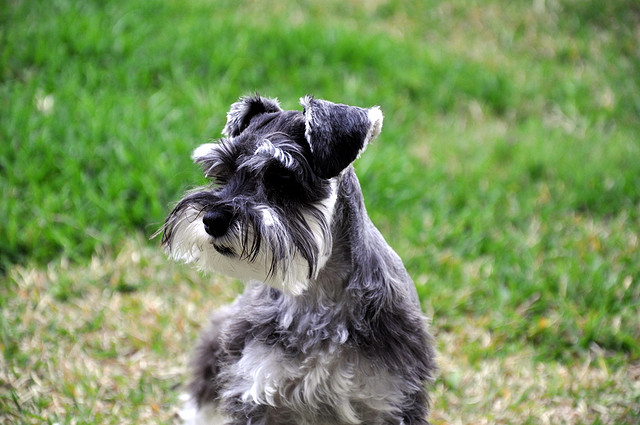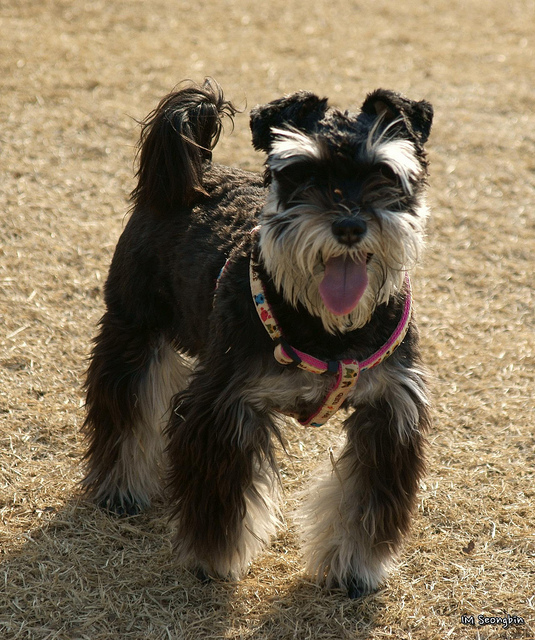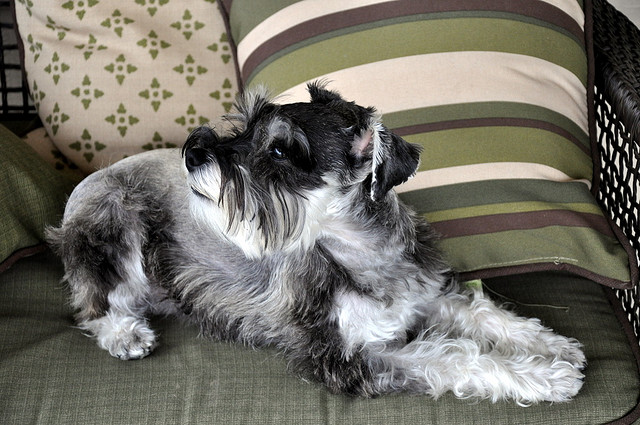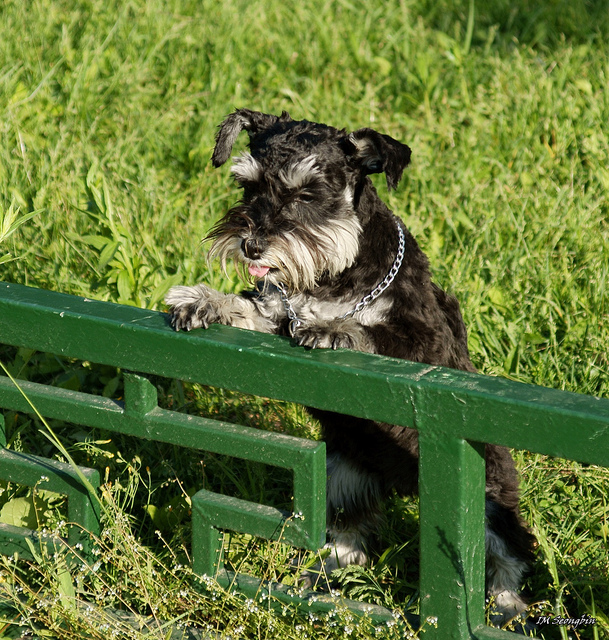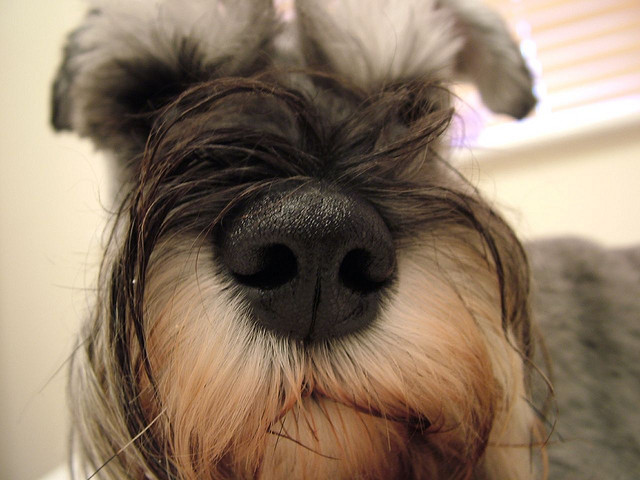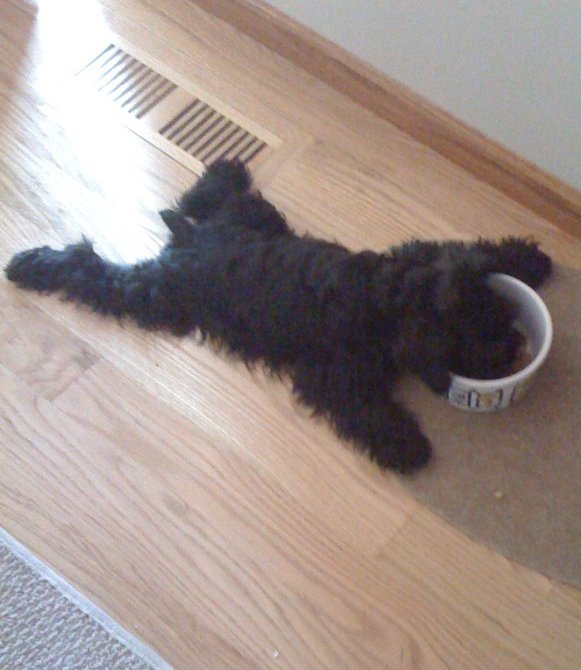Often called the Zwergschnauzer, the Mini Schnauzer or the Dwarf Schnauzer, the miniature schnauzer is a very spirited breed of dog that traces back to Germany. While these dogs originally were bred to eliminate rats, as well as other vermin, they are known today as beloved pets for the whole family. Although many other terriers are often fighters, miniature schnauzers are less included to fight. Since they barely shed, they are popular among individuals who have asthma or allergies. Just a few famous people who have owned this breed of dog include Mary Tyler Moore, Bob Dole, Bruce Lee and Bill Cosby.
Origin
Today’s miniature schnauzer is thought to be a descendant of the Standard Schnauzer, and some believe that its ancestry also includes the Poodle and the Affenpinscher. Paintings of the breed suggest that they have been around since the 1400s, although the breed was never recognized formally until the end of the 19th century. Heinrich Schott and Georg Riehl are thought to have miniaturized this breed by line breeding and cross breeding smaller puppies from Standard Schnauzer litters. A German stud book finally recorded its first miniature schnauzer in 1888, although the breed wouldn’t appear at a dog show until 1899.
In the 1920s, breeders in North America started to breed mini schnauzers, and these dogs have continued to become more popular. Standard and miniature schnauzers were included in the Wirehaired Pinscher Club of America, which was started in 1925. Later, all schnauzers were moved to the Terrier Group, although the breed wasn’t split into the standard and miniature schnauzer until 1927. The American Miniature Schnauzer Club was created independent of the Schnauzer Club of America in 1933, and both breeds were included in the AKC’s Terrier Group. However, in 1945, the Standard schnauzer was moved to the AKC’s Working Group, although the miniature schnauzer continues to be included in the AKC’s Terrier Group today.
Originally, this breed was developed to be a dog that worked on farms, and they were specifically bred to kill rats. However, while they were raised on farms, these dogs still do well in urban environments. Since they are so small, miniature schnauzers do well in city homes and small apartments. Today, the breed continues to do well as a watch dog and guard dog, and their intelligence makes them a popular dog in rally and obedience trials.
Appearance
While the miniature schnauzer is quite small, this breed is also square and sturdy. They have the very distinct schnauzer beard, bushy eyebrows, as well as a wiry coat. The coat comes in several different colors, including salt and pepper, white, silver and black and black. Their ears are high set on their skull and may be uncropped or cropped. Mini schnauzers also have a blunt, strong muzzle on a rectangular head. The breed’s tail is high, carried erect and is generally docked.
Usually an adult miniature schnauzer is between 12 to 14 inches tall and they should have a square proportion. Adult mini schnauzers usually weigh from 11 to 20 pounds.
Temperament
Even though the miniature schnauzer is small, they have a huge personality. They enjoy a lot of attention and they think they are in charge. These sturdy dogs have plenty of spunk and love playing and running outside with their owners. These smart dogs often use their intelligence for mischief, such as opening closets or cabinets to get to toys or food. They usually do well with other pets, but they may chase cats for fun.
Since miniature schnauzers are very intelligent, they are highly trainable. However, they can be stubborn and independent, so it is important that the individual training the dog is assertive and calm. For the best results, training should be started when this dog is still a puppy. Positive reinforcement and food motivate this breed, and it’s best to keep sessions varied and short, since this breed may get bored with repetition.
The miniature schnauzer is a terrier and exhibits all the common terrier traits, such as chasing, digging, suspiciousness to strangers and excessive barking. It is important to make sure that these dogs are socialized and exercised regularly to avoid problems. However, you won’t be able to train away their barking, since they are great watch dogs.
Grooming
To keep a miniature schnauzer looking good, grooming should be done every 5-8 weeks. Clipping these dogs can be difficult, so many individuals choose to take their dogs to a professional groomer. Dogs that will be shown must be hand stripped, which can take a lot of time. However, if you don’t plan to show your miniature schnauzer, there is no need for hand stripping. The breed does not shed very much, but hair that gets loose needs to be brushed out. After meals, it is important to wash out the beard of miniature schnauzers.
Working roles
Today, the miniature schnauzer is mainly kept as family pets. However, these dogs originally had working roles, working on farms by herding animals and eliminating rats and other types of vermin. Some people still use this breed for ratting, although it’s fairly uncommon today.
Health
The miniature schnauzer generally lives to be between 12-15 years old. In general, the breed is quite healthy, however, some of these dogs may deal with health problems that come with high levels of fat. One such problem is hyperlipidemia, a condition that may increase the risk of pancreatitis. Bladder stones, eye problems and diabetes may also occur, although these problems may be avoided by ensuring the breed eats unsweetened, low-fat foods.
Comedone syndrome is also a common problem among the miniature schnauzer. This condition results in bumps filled with pus that generally occur on the dog’s back. Their ears are prone to infections as well, especially in miniature schnauzers that have uncropped ears.
Some of the other common health concerns seen among miniature schnauzers include:
- Cushing’s disease
- Von Willebrand syndrome
- Allergies
- Epilepsy
- Cataracts
- Melanoma
- Plumonic stenosis
- Lens luxation
- Retinal dysplasia
- Progressive retinal atrophy

